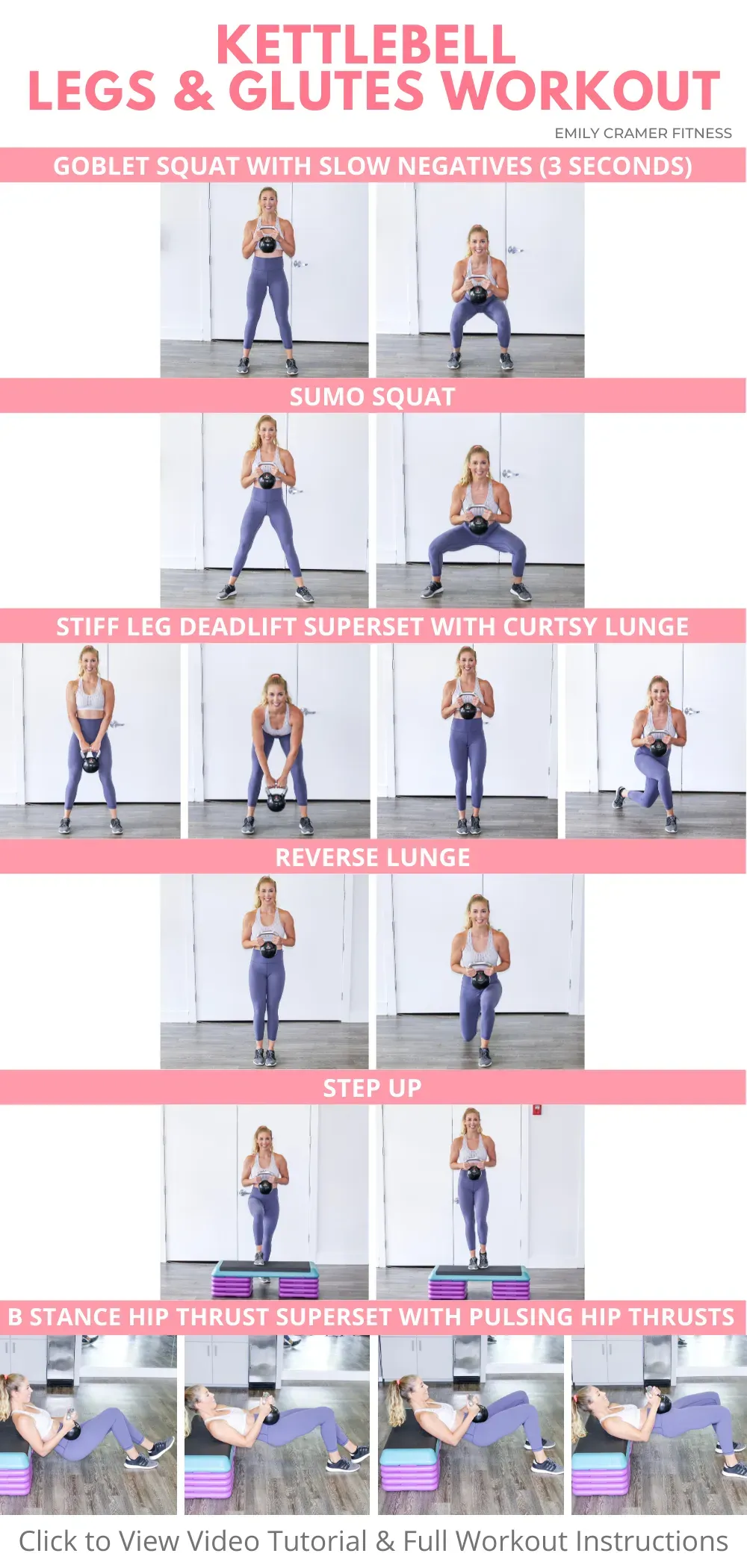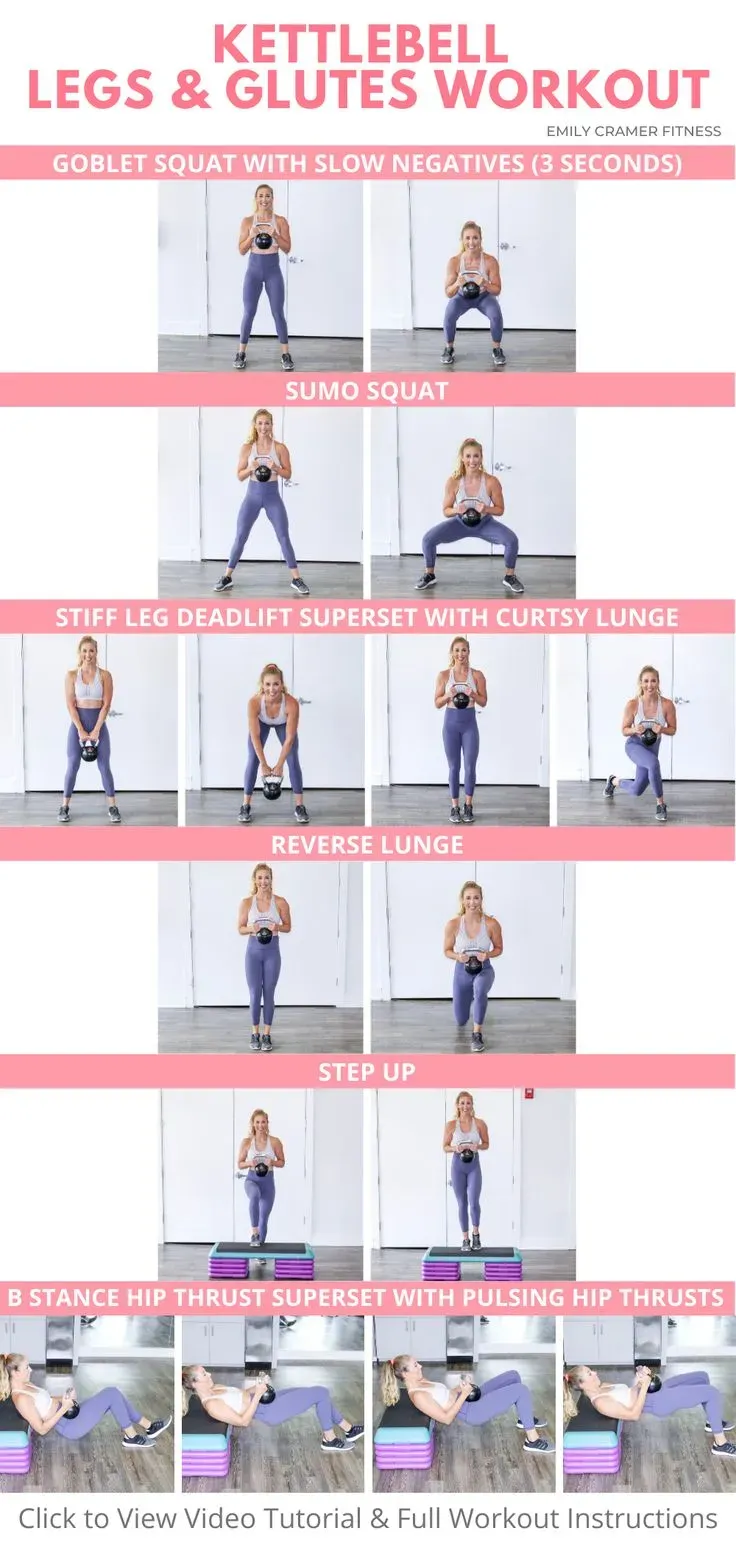Table of Contents
Tired of the same old squats and lunges? Ready to challenge your lower body in a way that builds serious power and definition? If you're looking to sculpt strong, resilient legs and glutes, a dedicated kettlebell legs and glutes workout might be exactly what your routine needs. These cast-iron cannonballs aren't just for swings; they offer a dynamic and effective way to target your hamstrings, quads, and glutes with precision and intensity.
Unlock Power: Why Use Kettlebells for Legs and Glutes?

Unlock Power: Why Use Kettlebells for Legs and Glutes?
Beyond the Barbell: Why Kettlebells Hit Different
Look, we've all done the standard gym fare. Barbell squats, leg press, you name it. They work, sure, but let's be honest, they can get a bit... static. Kettlebells bring a whole different flavor to your lower body training, especially for your kettlebell legs and glutes workout. The off-center weight distribution of a kettlebell forces your stabilizing muscles to work overtime. This isn't just about moving weight up and down; it's about controlling a dynamic object through space.
Think about a kettlebell swing. It's not just a hamstring exercise; it's a full-body movement that requires serious coordination and power generation from your hips and glutes. This translates into real-world athleticism. Picking up groceries, moving furniture, sprinting for a train – life happens in dynamic, sometimes awkward, ways. Training with kettlebells prepares your body for that unpredictability far better than sitting on a machine.
Engaging More Than Just the Big Movers
It’s easy to just think about the big prime movers like your quads and gluteus maximus. But a truly strong lower body relies on a complex network of smaller muscles – the stabilizers, the rotators, the ones that keep your knees from caving in and your hips from looking like they belong on a marionette. Kettlebell exercises, particularly those involving single-leg variations or swings, inherently challenge these often-neglected muscles.
The grip demand alone in many kettlebell movements adds an extra layer of challenge that links your upper and lower body, creating a more integrated strength. This synergistic effect means you're not just building muscle; you're building functional strength that makes you more resilient and powerful from the ground up. It’s about building a robust engine, not just painting a pretty chassis.
- Kettlebells challenge stabilizer muscles more effectively.
- They promote dynamic, functional strength.
- The off-center weight increases core engagement.
- They build coordination and body control.
- Grip strength is a significant factor in many exercises.
Essential Kettlebell Legs and Glutes Workout Exercises

Essential Kettlebell Legs and Glutes Workout Exercises
The Goblet Squat: Your Foundation Builder
let's get down to brass tacks. If there's one exercise that's a non-negotiable cornerstone for any kettlebell legs and glutes workout, it's the goblet squat. It’s deceptively simple but incredibly effective. You hold the kettlebell by the horns (the handle) against your chest, feet roughly shoulder-width apart, and you squat down like you're sitting into a chair.
Why is it so good? Holding the weight in front acts as a counterbalance, often allowing you to maintain a more upright torso and get deeper into the squat, which is fantastic for hitting those glutes and quads hard. It's also a great movement pattern teacher. If you struggle with barbell squat depth or form, the goblet squat can help groove that movement efficiently. Plus, it forces your core to engage like crazy to keep you from folding over.
Kettlebell Deadlifts: Hinging for Power
Next up, the deadlift. But the kettlebell version offers some distinct advantages, especially for a kettlebell legs and glutes workout. You can perform conventional kettlebell deadlifts with the weight between your feet, or sumo deadlifts with a wider stance and the kettlebell held lower. Both variations are phenomenal for building posterior chain strength – think hamstrings, glutes, and lower back.
The key here is the hinge pattern. It's not a squat; it's about pushing your hips back, maintaining a flat back, and driving through your heels to stand up. Kettlebell deadlifts often allow people to get into a better hinge position initially compared to a barbell, as the weight is lower to the ground. This focus on the hinge is vital for everything from lifting heavy things safely to jumping higher.
Exercise | Primary Focus | Key Benefit |
|---|---|---|
Goblet Squat | Quads, Glutes, Core | Excellent for depth and form, core engagement |
Kettlebell Deadlift | Hamstrings, Glutes, Lower Back | Teaches proper hip hinge, builds posterior chain strength |
Kettlebell Swing | Glutes, Hamstrings, Hips | Develops explosive power, metabolic conditioning |
The Kettlebell Swing: Explosive Hip Power
No kettlebell legs and glutes workout is complete without the swing. This isn't some gentle arm movement; it's a powerful, explosive hip hinge. The force comes from snapping your hips forward, driving the kettlebell up to chest or eye level. It's a ballistic exercise, meaning you generate force quickly and explosively, which is different from the slower, grinding nature of squats and deadlifts.
The swing is arguably one of the best exercises for developing powerful glutes and hamstrings. It teaches you to use your hips for power, a skill that carries over into countless activities, from running to jumping. It also gets your heart rate up fast, adding a conditioning element to your strength work. Mastering the swing takes practice, focusing on the hip drive and keeping your arms relaxed, letting them act like ropes.
Building Effective Kettlebell Lower Body Routines

Building Effective Kettlebell Lower Body Routines
Putting the Pieces Together: Crafting Your Routine
so you've got the basic moves down – the goblet squat for depth and quad work, the deadlift for posterior chain power, and the swing for explosive hip drive. Now, how do you stitch these together into a proper kettlebell legs and glutes workout that actually delivers results? It's not rocket science, but it requires a bit more thought than just randomly doing sets. You need a plan, a structure, something that tells you what to do and when to do it.
Think about it like building a house. You wouldn't just start hammering nails; you need a blueprint. For your lower body, this means deciding on your goal. Are you chasing strength? Muscle size? Or just trying to improve endurance and burn some calories? Your goal dictates how you combine the exercises, how many sets and reps you do, and how much rest you take. Ignoring this is like trying to bake a cake without a recipe – messy, frustrating, and probably won't taste great.
Structuring Workouts for Specific Goals
Let's talk turkey about structuring your kettlebell legs and glutes workout. If strength is the name of the game, you'll focus on lower reps (think 3-5) with heavier weights for exercises like goblet squats and deadlifts. You'll take longer rest periods between sets to allow for maximum recovery and force production. Ballistic moves like swings might be used less frequently or as a warm-up.
For building muscle (hypertrophy), you'll typically work in a slightly higher rep range (8-12) and use techniques like supersets or circuits to increase metabolic stress. Shorter rest periods (60-90 seconds) are common here. You might combine a grind like a goblet squat with a ballistic like swings or a single-leg variation to hit the muscles from multiple angles. Endurance training pushes reps even higher (15-20+) or focuses on timed sets, often incorporating swings and high-rep squats with lighter bells.
- Strength Focus: Low reps (3-5), heavy weight, long rest.
- Muscle Focus: Moderate reps (8-12), moderate weight, shorter rest, consider supersets.
- Endurance Focus: High reps (15-20+), lighter weight, minimal rest, timed sets.
- Combine Grinds (squats, deadlifts) and Ballistics (swings) for comprehensive training.
- Vary exercises and rep schemes to prevent plateaus.
Form, Frequency, and Fueling Your Kettlebell Progress

Form, Frequency, and Fueling Your Kettlebell Progress
Nailing the Form: More Than Just Lifting Weight
Let's be brutally honest: swinging a heavy object around without paying attention to how you're doing it is a fast track to injury, not gains. Perfecting your form for a kettlebell legs and glutes workout isn't optional; it's fundamental. Think of it like building a skyscraper – a shaky foundation means the whole thing comes crashing down eventually. For exercises like the swing, it's all about the hips. You're not squatting the weight up; you're using a powerful, explosive hip hinge. Keep your back flat, chest up, and let your hips do the work. For squats and deadlifts, maintain a neutral spine and focus on controlled movement through the full range of motion. Rushing reps or trying to lift too heavy before you've earned the right with solid technique is just ego lifting, and your body will send you a bill later. Film yourself if you can, or better yet, get a coach to watch you. Small tweaks can make a massive difference.
Consistency is King: Training Frequency and Fueling Your Fire
Alright, you've got the form dialed in (or you're working on it diligently). The next piece of the puzzle for seeing results from your kettlebell legs and glutes workout is consistency. How often should you hit those legs? For most people, training your lower body 2-3 times a week is a solid starting point, allowing for adequate recovery between sessions. Overtraining is just as detrimental as undertraining. Listen to your body; soreness is one thing, but sharp pain or persistent fatigue means you need more rest or better fueling. Speaking of fueling, you can't build a castle without bricks. Your muscles need protein to repair and grow after being broken down by training. Don't neglect carbohydrates either; they provide the energy for those intense swings and heavy squats. Hydration is non-negotiable. Water is the unsung hero of performance and recovery. Skipping meals or relying on junk food after a tough workout is like trying to fill a high-performance car with muddy water – it just won't run right.
- Prioritize technique over weight.
- Focus on the hip hinge for swings and deadlifts.
- Maintain a neutral spine during all lifts.
- Train lower body 2-3 times per week for most.
- Ensure adequate recovery between sessions.
- Fuel your body with sufficient protein and carbohydrates.
- Stay properly hydrated throughout the day.
Forge Your Lower Body with Kettlebells
So there you have it. Integrating a kettlebell legs and glutes workout into your training isn't some fleeting fitness fad; it's a proven path to building a robust, powerful lower body. We've covered the essential movements, the benefits, and how to start putting it all together. It takes consistent effort and attention to form, but the payoff – increased strength, improved stability, and legs that actually look like you train them – is undeniable. Stop making excuses and pick up the bell. Your glutes will thank you, eventually.